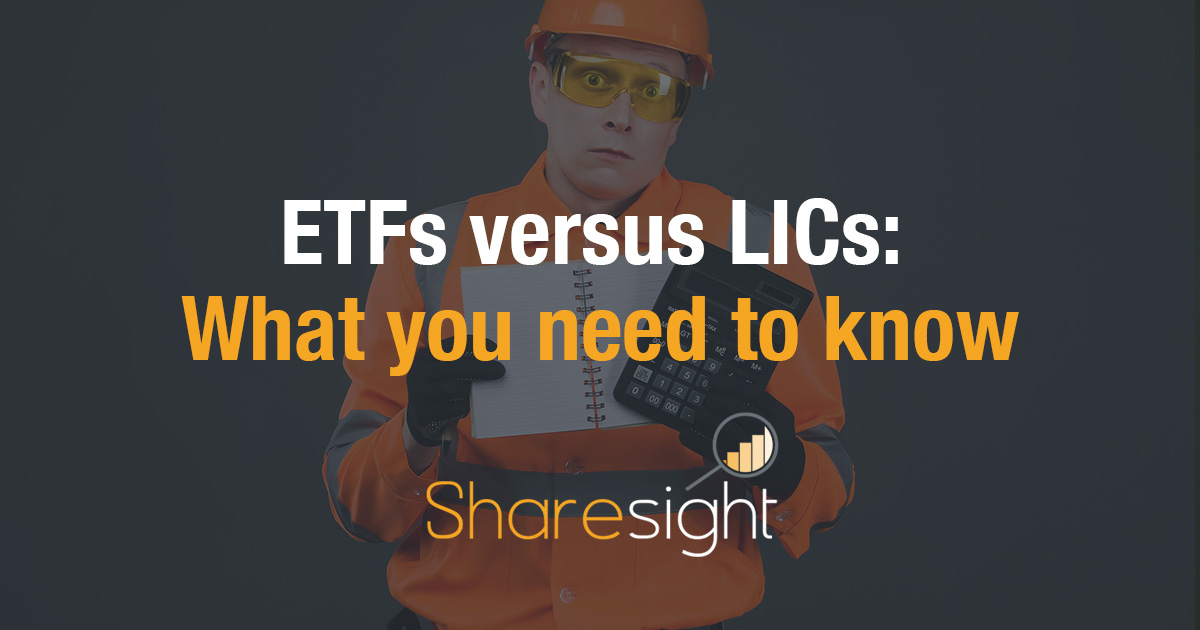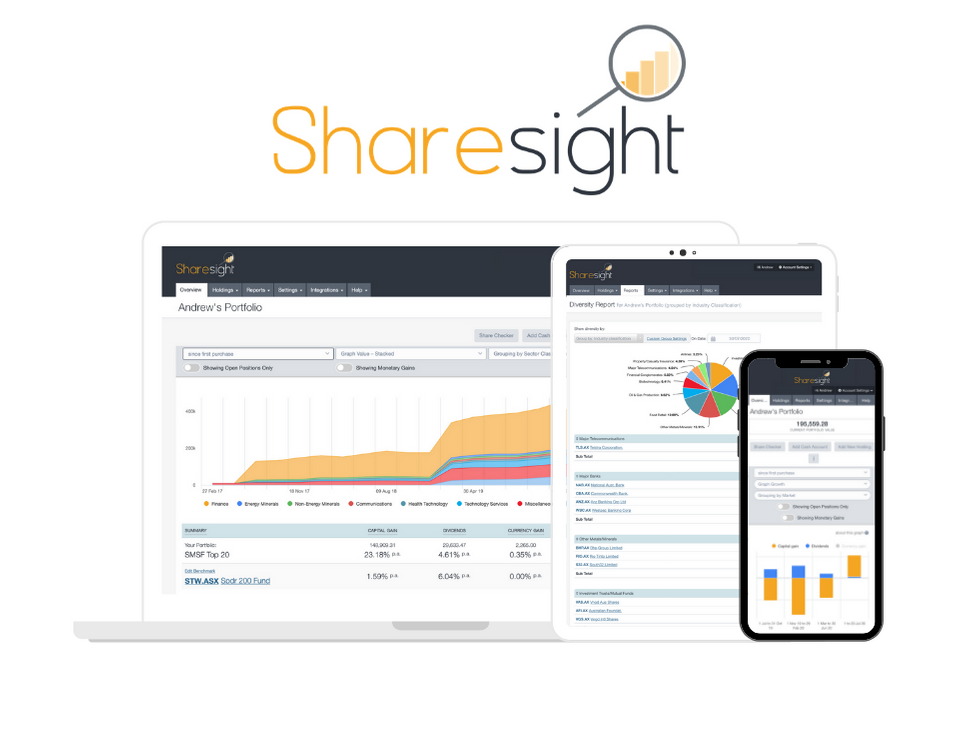ETFs versus LICs: What you need to know
Exchange Traded Funds (ETFs) and Listed Investment Companies (LICs) are both very popular investment choices among retail investors in Australia. They have many similarities, but have some important differences investors should be aware of.
So what are the key differences between ETFs and LICs, and which one is right for your portfolio? Let’s take a look at both investment options to find out.

What is an ETF?
An ETF is a type of managed fund that trades on a stock exchange like regular shares. A lot of ETFs track a particular market index, for example the ASX200. Rather than trying to outperform the index, these ‘passive’ ETFs will closely mirror the index performance, minus management fees.
What is an LIC?
Just like any company listed on an exchange, an LIC is a publicly listed company itself (hence the name, listed investment company). The company may invest in a wide range of assets including but not limited to shares, property and bonds. When you invest in an LIC you’re buying shares in that company. You can buy and sell your shares in an LIC on the ASX, just like you would any public company.
Key differences between ETFs and LICs
There are a number of key differences between ETFs and LICs that will influence your decision as to which one is best for your portfolio.
-
Structure. An LIC is a company, so when you invest in an LIC you’ll own shares in the LIC itself, rather than the underlying assets. An ETF is a trust, so when you invest in an ETF you’ll receive units in the fund. Because an LIC is a company, the board of directors will determine the dividend payment (or decide to pay no dividend at all) each financial year. However an ETF must pass on all dividend earnings to unit holders.
-
Tax implications. If the LIC receives unfranked dividends from the underlying investments, it will pay tax on those dividends at the company tax rate and deliver franked dividends to shareholders. An ETF, on the other hand, passes all dividends through to unitholders in the Attribution Managed Investment Trust (AMIT) tax structure. ETFs are also subject to the AMIT regime
-
Open-ended versus closed-ended. ETFs are open-ended, meaning the manager can issue more units (shares) as more investors buy into the ETF. While in comparison LICs are closed-ended and have a set number of shares on issue in the market, which means the share price will vary as a result of investor demand for the LIC, rather than track the value of the underlying investments .
-
Management. ETFs are typically ‘passive’ investments that simply tracks the performance of an entire index, while an LIC has investment managers actively picking stocks with the intention of beating the market.
-
Cost. Because LICs have investment managers actively selecting which assets to invest in and seeking investment opportunities they believe will outperform, LICs usually have higher costs attached.
-
Exposure. When investing in a wide index tracking ETF, you get exposure to a wider pool of assets,potentially tracking several hundred stocks. Because LICs actively select each individual asset to invest in, they usually offer access to maybe 100 or 200 underlying assets at most.
Advantages of ETFs and LICs
ETFs and LICs are popular with Australian investors as they have a number of big advantages.
● Low cost. While ETFs are usually cheaper, both LICs and ETFs are very low-cost ways to invest in a pool of assets. Looking at Australian equities for example, the BetaShares A200 ETF has management fees of just 0.07% p.a, and the popular LIC AFIC has management fees of 0.14% p.a. The fees will vary depending on whether the fund is passive or actively managed. Plus, for the one brokerage fee you get exposure to hundreds of assets.
● Diversification. Both investments offer instant diversification across hundreds of underlying assets in the one transaction. This not only helps to reduce risk, but also dramatically reduces the investment costs.
● High liquidity. Because they’re traded on a public exchange like regular shares, a lot of ETFs and LICs enable you to easily sell your position on the exchange if you need the cash or want to invest elsewhere.
There are many advantages of investing in an ETF or LIC, or even both. Understanding the main differences between ETFs and LICs will help you make a better investment decision.
Track your investments in ETFs with Sharesight
Whether you invest purely in ETFs, or you use ETFs simply to increase your portfolio diversity, Sharesight is the perfect tool to track the performance of investments in Exchange Traded Funds.
Sharesight isn’t only for tracking ETFs, it’s the complete investment performance tracking and reporting tool, allowing investors to:
-
Track all your investments in one place, including over 170,000 domestic and international stocks, mutual/managed funds, property, foreign currency and even cryptocurrency
-
Run powerful performance reports to calculate your portfolio Performance, Diversity and Contribution Analysis
-
Easily share access of your portfolio with family members, your accountant or other financial professionals so they can see the same picture of your investments that you do
Join over 250,000 investors tracking their investment performance with Sharesight and sign up for a free Sharesight account to get started today.
Disclaimer: This article is for informational purposes only and does not constitute a product recommendation, or taxation or financial advice and should not be relied upon as such. Please check with your adviser or accountant to obtain the correct advice for your situation.

FURTHER READING

You can time the market – and ETFs are the way to do it
Marcus Today founder and director Marcus Padley discusses timing the market, and how investors can do this using exchange-traded funds (ETFs).

Morningstar analyses Australian investors’ top trades: Q1 2025
Morningstar reviews the top 20 trades by Australian Sharesight users in Q1 2025, and reveals where their analysts see potential opportunities.

Sharesight product updates – April 2025
This month's focus was on improving cash account syncing, revamping the future income report and enabling Apple login functionality.